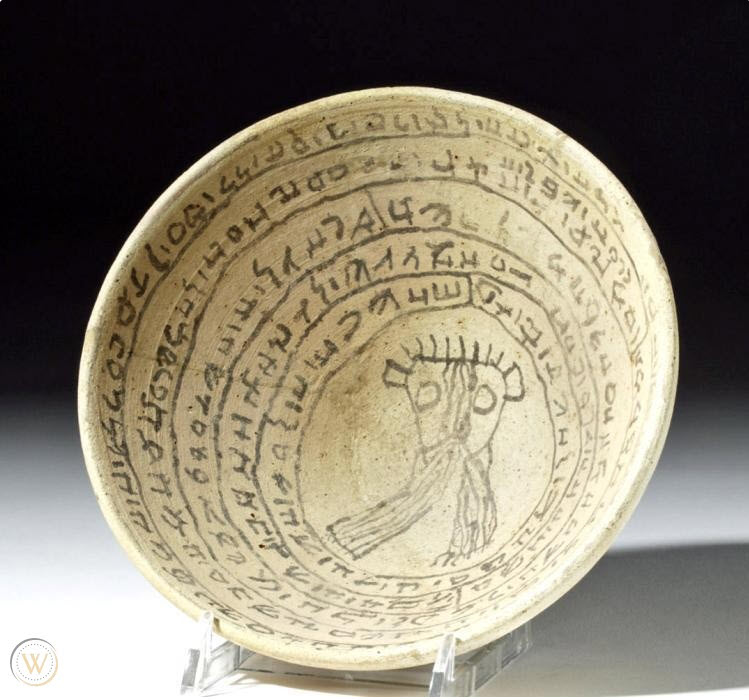Love at first sight? Yes.
This particular ceramic bowl, currently in the collection of the British Museum, captivated me from day one. It’s unbalanced and awkwardly formed. It’s not colorful or elaborately decorated. It doesn’t display “fine craftsmanship.” It’s imperfect. It’s gorgeous.

A Google Arts & Culture article tells us: “This is one of many Late Sasanian and post-Sasanian ceramic bowls and lids which were used in magical ceremonies intended to protect individuals and their relatives or belongings from evil spirits. Spells were written on these vessels in a variety of different scripts and occasionally, the bound spirit and/or magicians were also depicted on the inside of the vessel. The abstract stick-like figure in the centre of this bowl may be a demon.”
For me, the irregularity of this bowl speaks of a focus more important than formal perfection. A formalist would have ditched this bowl; he or she would have tossed it into a midden heap as a lost cause. But the maker here proceeded to invest hours into carefully inscribing his or her text – the incantation, the plea to spirits and/or magicians. We can’t understand the incantation now. This dialect of Aramaic has been lost to us. That, too, presents a certain mystery that attracts me to this piece. Prayers to the gods, the spirits, chants to the unknown and unknowable.
I was surprised to learn that this type of “magic bowl” was fairly common in Jewish communities in Mesopotamia, Syria, Palistine and into Egpyt during the 5th to 8th centuries AD. Bowls with spiraling Aramaic text have been found throughout this region and are now held in collections around the world.




I’m not surprised to see others before me have been enchanted by these bowls. Alison Miner wrote a wonderful ode to a similar bowl in the Penn Museum Blog.

Additional information on incantation bowls found in one particular area can be found online at “Nippur: The First Great Discovery” a post from the Archaeologists and Travelers in Ottoman Lands blog. The post notes various theories about the use of these incantation bowls. I’ll leave that to archaeologists. For me, I’ll just enjoy the hum of connection to a spiritual world that emanates from these ceramic bowls.
Very interesting, I was unaware of these. I love the second one: on closer inspection there is a second smaller figure, and it seems perhaps 2 Cobras, one on each side? Lots of magical feeling here.
LikeLike